
营收续降 BB&B再关19州37店 纽约最多
世界新闻网
01/09/2022
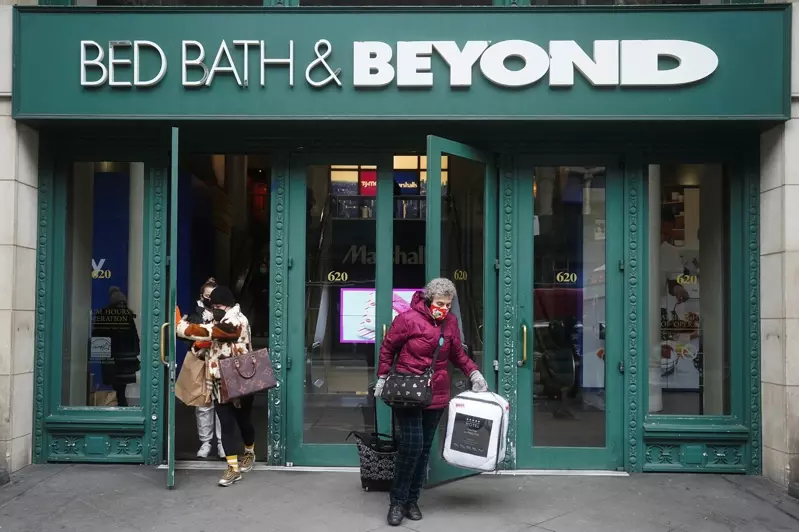
延续2020年的布局,居家用品零售商Bed Bath & Beyond下个月将关闭各州共37家分店,其中又以纽约州为数最多,共关闭七家分店;这是该公司2020年宣布关闭200家分店计划的一部分。
关闭的店家范围遍及阿拉巴马、亚利桑纳、加州、佛罗里达、乔治亚、爱达荷、密西根、明尼苏达、密苏里、密西西比、新泽西、纽约、俄亥俄、宾州、德州、维吉尼亚、华盛顿、威斯康辛和西维吉尼亚州。
总部位于新泽西州的Bed Bath & Beyond发言人表示,上述大部分的店家预计都会在下个月结束前关闭;但事实上,该公司早在2020年就宣布未来的布局,关闭这些分店只是布局计划的一部分。根据当初公布的计划,该公司将在两年内关闭约200家分店。
根据去年第三季的报告,Bed Bath & Beyond拥有近1000家的分店,而大多店目前仍维持在Bed Bath & Beyond名下。
不过该公司6日公布的财务报告指去年第四季营收明显下滑许多,甚至在佳节假期间也毫无起色。该公司首席执行官特里顿(Mark Tritton)解释主因是受到供应链影响:「客户体验重挫,因为产品的取得性无法满足市场上的强劲需求。」
另一方面,梅西百货(Macy’s)也在上周传出将关闭分店,作为规模缩小规画的一部分。
这家公司年赚1300亿不交税: 特朗普和拜登都没办法?
文章来源: 正解局
12/29/2021
上周,谁也没想到网红直播顶流薇娅,犯下一个不可饶恕的错误:偷税漏税。
最后,她被追缴并处罚 13.41 亿,账号、直播间直接关停。
网友戏言:” 就这个处罚金额,我不吃不喝九万年,也能挣到。”
处罚不可谓不重。
原本,大家朴素的观念都是:赚得越多,自然交的税也就越多,对社会的贡献也就越大。
但是,不管是国内还是国外,一些富人不光赚钱有一套,偷税更是有一套。
说出来可能很多人不信,在美国大名鼎鼎的亚马逊公司,一年营收几千亿美元,不光不交税,还能再额外领取 1 亿美元的补贴。
是不是非常不可思议?
亚马逊公司是全球规模最大、商品品种最多的电商平台。
2020 年,亚马逊总营收为 3860.64 亿美元,净利润达到 213.31 亿美元(换算成人民币大约是 1359 亿元),市值更高达 1.74 万亿美元(差不多是 5 个半阿里巴巴,16 个京东)。
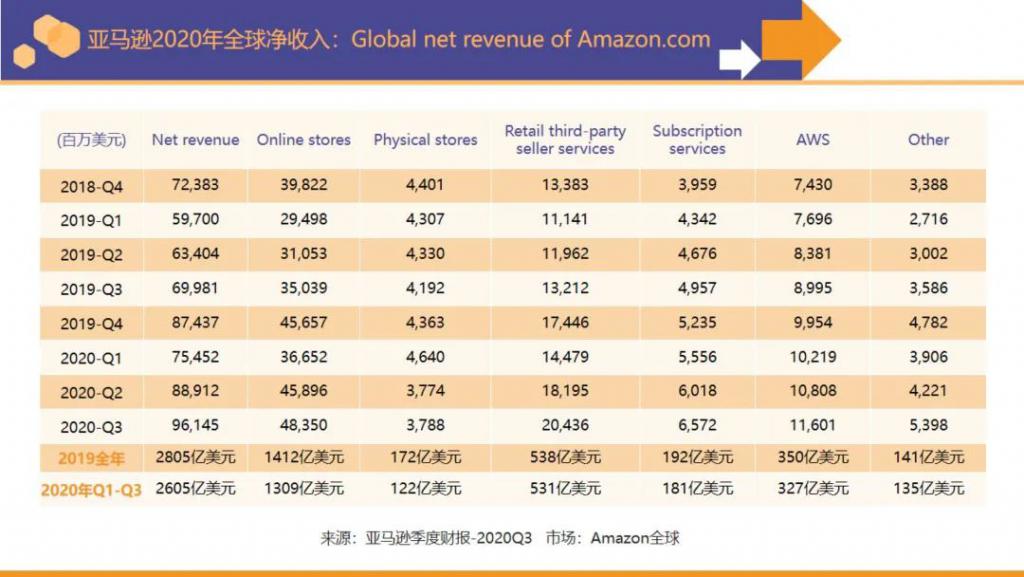
这一年,中国的阿里巴巴总营收 800 亿美元(约 5097 亿元人民币),净利润 220 亿美元(约 1401 亿元人民币);腾讯总营收 756 亿美元(约 4816 亿元人民币),净利润 192 亿美元(约 1223 亿元人民币)。
也就是说,亚马逊一年的总营收大约相当于阿里和腾讯两家当年营收总和的 2.5 倍。
而创始人贝索斯也以 2000 亿美元的身价高居全球富豪榜榜首,五年的财富平均增长率高达 34%。
按照美国咨询公司 Comparisun 的分析,照此速度,贝索斯的财富将在 2026 年达到一万亿美元。

如此能赚钱的创始人却在税收上 ” 一毛不拔 “,自然引发了美国政府和民间的强烈不满,可又对其无可奈何。
2018 年,亚马逊的总营收大约为 2329 亿美元,净利润为 101 亿美元,但是税收额为 0。这还不算,一分钱没缴的亚马逊居然还拿到了 1.29 亿美元的联邦退税。
相比之下,总营收远不及亚马逊的阿里和腾讯却要每年交税近 80 亿美元,真是哭晕在厕所里了。
那么,达到万亿市值的亚马逊真的是从不交税么?

首先必须要说明下,在美国不交税那可是极为严重的情况。
像薇娅这样拖欠税款上亿的,如果搁在美国,可能 IRS(Internal Revenue Service,即美国国内税务局)早已经直接派出荷枪实弹的警察登门了。
要知道,这个 IRS 可不是吃素的,真正的 ” 武装到牙齿 “,从武装力量到专门的法庭、监狱一应俱全,装备甚至好于美国司法系统。
这么说吧,美国当年有个黑手党大佬叫阿尔 · 卡彭,贩毒走私等勾当一样没少干,可盯了他数年的 FBI 愣是拿他没辙,什么证据都没找出来。
直到 IRS 知晓这家伙居然偷逃税款近 1 亿美元后,亲自出马,找到其逃税证据后派人上门抓捕,这才将他关进了监狱。

IRS 也不是没盯上过亚马逊,2017 年的亚马逊转让定价案,IRS 就和亚马逊 ” 杠 ” 上了,启动了反避税调查,结果却以亚马逊胜利告终。
那么,如此厉害的 IRS 为何没能抓到亚马逊的 ” 小辫子 ” 呢?
这又要从美国的税收管理体制说起。
美国是分税制,联邦、州、地方三级税收分开,各自进行征管,地方税收由州决定。
换句话说,单从属地管理来讲,一家合法企业的经营必须需要同时缴纳联邦税和州税。
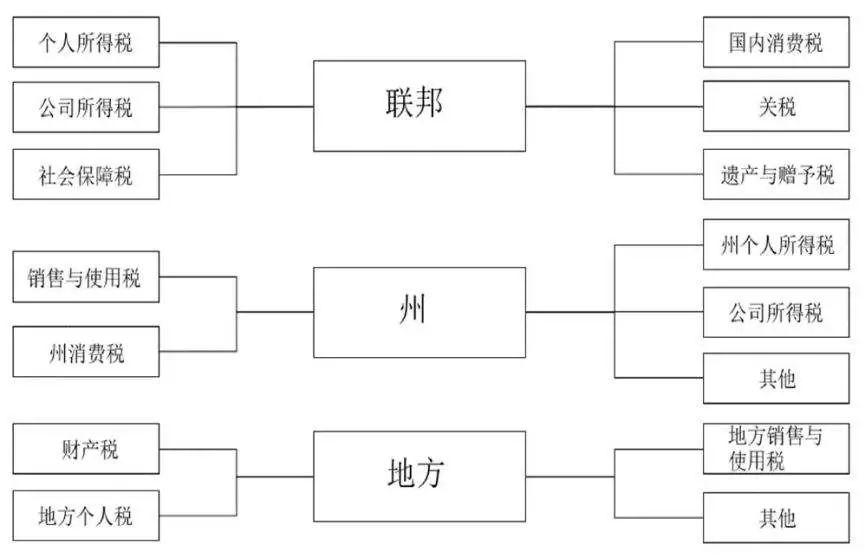
但是根据美国智库税收与经济政策研究所(the Institute on Taxation and Economic Policy,ITEP ) 统计,亚马逊已数年都没有交过联邦所得税,甚至过去十多年里,亚马逊的有效税率还是个位数。
2019 年,总统特朗普就曾多次公开表示亚马逊有意少交了巨额的税款。
在同一年,后来成为总统的拜登也发推特表示:像亚马逊这样年入上百亿美元利润的企业,不应该支付比消防员、老师更低的税率。
亚马逊显得很委屈,发推文辩解道,” 我们自 2016 年以来缴纳了 26 亿美元的企业税,该交的每一分钱都交了。联邦税法鼓励企业对美国经济进行再投资,自 2011 以来,亚马逊投资了 2000 亿美元,创造了 30 万个工作岗位。”

划重点,堂堂两位总统在明知企业有超高收益却依然能少缴联邦税情况下,也只能发推特抱怨,说明亚马逊在避税这块确实做到了无人能比。
听上去,亚马逊的避税手段上简直神奇到不可思议,那它又是如何做到的呢?
其实,亚马逊也不是一分钱税款没交,只是相比数百亿美元的利润,缴纳的税款真是少得可怜。
本身税款就交得不多,居然还能反手从政府再拿回上亿美元的退税补贴,这操作真是太秀了!

说到避税和少缴税,在美国可不只有亚马逊一家公司。
美国智库税收与经济政策研究所(ITEP)就曾统计,2018 年共有 60 家世界 500 强公司没有缴纳任何联邦税,包括亚马逊、IBM、通用汽车、Netflix 等。
美国税收和经济政策研究所(ITEP)发布的分析报告
其中属亚马逊最为 ” 优秀 “:2017 年亚马逊税前收入为 56 亿美元,获得了 1.37 亿美元的联邦退税,相当于税率为约 -2.5%;2018 年亚马逊税前收入为 110 亿美元,结果又拿到 1.29 亿美元的联邦退税,税率变为约 -1%;
这简直让人想起著名的 ” 马太效应 ” 所说,你有的还将给你更多,你没有的会将你仅有的也拿走。

这种避税手段美其名曰 ” 税务统筹 “,可说白了,亚马逊所谓的 ” 避税 ” 其实就是在削尖脑袋钻政策漏洞。
首先是亚马逊利用美国对研发企业的税务优惠政策,将大量人员福利和工资申报为研发投入申请减税,每年光靠此一项减税就能省下大约 15 亿美元。
这其中最有代表性的就是亚马逊将给员工发放的股票作为工资薪酬(支出)的一部分。
一般来说,很多公司给资深员工发放股票期权替代工资薪酬,对应股票期权的价值则可作为公司的成本抵扣。
这是由于公司股价越高,可抵扣的成本就越大。
通常企业操作是通过股市回购,拉升股价后再发给员工;而亚马逊则不同,不仅不回购,反而直接发放给员工。
亚马逊是按股票交易实时价值来估算可以减免的税额,这样做的好处是,股价涨得越高,税款减免的额度越大。
这样一来,虽然看上去亚马逊股东的利益受损,可因为过去 20 年间,亚马逊股票年化收益率达到了 37%,股价涨幅超过 800 倍,赚的比赔的多,股东自然个个都装了糊涂。
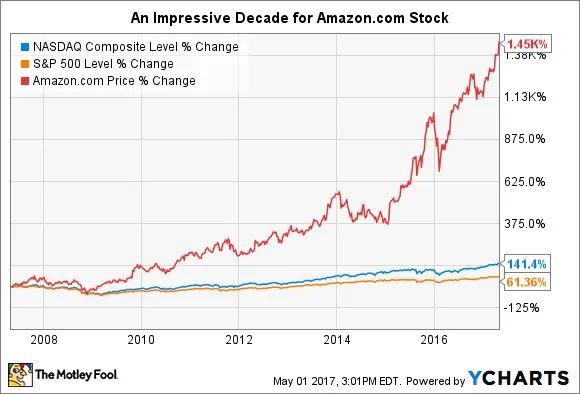
其次,由于美国和中国一样,各州都有相应吸引投资者和企业的税收优惠政策。
亚马逊从 2005 年开始就在全美各地兴建数据、仓储、物流等基地,十年间已经累计享受了近 10 亿美元的税收优惠。
再次,一直指责亚马逊的特朗普还无意中帮了个大忙。
2017 年,特朗普大幅修改税法法案时,采取了一项减值抵税优惠政策。
根据条文,过去美国企业固定资产和设备都会按折损减值,可计算时间长达数十多年。新政策出台后,企业当即就可以借此减值抵税。
这意味着亚马逊建设的那么多库房、研发中心,过去可能要等几年乃至十几年,现在就可以直接作为成本来抵税。
光这项政策,就让亚马逊的减值额度当即上升了 40%,再次获得了合理避税的优厚条件。
不仅可以用资产折旧抵税,亚马逊更是通过营业亏损来抵扣税款。
从成立以来,亚马逊几乎是放开手脚在各个领域都会 ” 插一手 “,从基础设施到 AI 智能以及云计算等方面,反正只要能做的业务,亚马逊一样也没落下。
这样一来,你会发现亚马逊有个奇怪现象:营收是逐年增长,可却常年属于 ” 亏损企业 ” 的状态。
从成立至今 20 多年,亚马逊几乎亏了数十亿美元,净利润也一直较低,始终处于摇摇欲坠的状态。

一家全球 500 强企业,年年亏损,还年年市值走高,这其中的猫腻,谁都明白是怎么回事。
有人说了,这么 ” 亏 ” 的企业,美国政府不管管么?
还真没法管。
实际上,包括我国在内,为了促进经济的发展,帮助企业渡过困难时期,世界各国的税法几乎都允许企业营业亏损抵转,也就是企业可以用当年的亏损额抵消来年的应缴税款,这称之为 ” 结转年限 “。
只是,我国这个时间段不得超过 5 年,美国却是 15 年 ……
2019 年,实在顶不住社会舆论的亚马逊终于补缴了 1.62 亿美元联邦税,这也只占其总收入的 1.2%。
算下来,亚马逊实际还拖欠 9.14 亿美元的联邦税,可是靠 ” 结转年限 ” 政策,亚马逊在税收上依旧开开心心地 ” 寅吃卯粮 “。

发展到今天的亚马逊,已经是一家全球公司,业务遍及全世界。
合理避税的套路不只在国内 ” 玩 “,海外也一样 ” 玩得溜 “。
从 2005 年进军欧洲市场开始,亚马逊就在避税模式上成功建立了 ” 防火墙 “。

由于美国是对所有美国企业采取全球征税模式,除了 35% 的联邦税率,境外收入要转回美国还得单独申报纳税。
于是,亚马逊在欧洲搞了个 ” 降低境外税,并将利润留存境外 ” 的骚操作。
简单地说,亚马逊先是在欧洲的卢森堡成立了亚马逊欧洲控股技术公司(Amazon Europe ) ,这纯属一家没人没效益的 ” 空壳公司 “。
通过壳公司与亚马逊的 ” 成本分摊协议 “,仅需很少的费用就获得了亚马逊大部分的授权和知识产权使用权。
紧接着,亚马逊又在卢森堡开设了亚马逊欧盟公司(Amazon EU ) ,这是家实打实干事的企业,主要负责亚马逊全欧洲的零售业务。
然后,壳公司亚马逊欧洲控股技术公司再与亚马逊欧盟公司签协议,以知识产权授权的方式拿到亚马逊欧盟公司 90% 的经营收入。

两家卢森堡公司其实都是亚马逊旗下的企业,只不过经营收入从左手转到了右手而已。
有人会觉得这样是不是有些绕,太麻烦。
可这正是亚马逊的聪明之处,可谓 ” 一箭三雕 “。
首先,根据美国税法,壳公司又是外国公司,而外国公司不是美国企业,本来就无需纳税;而两家公司换手后,亚马逊在欧洲的实际利润率远不到规定的 35%,就不需要向美国交税。
其次,选择卢森堡,是因为按照这个国家的规定,经营企业亚马逊欧盟公司只要缴经营所得税,可是算下来,公司已经将 90% 的收入作为成本交给了壳公司亚马逊欧洲控股,所得税几乎少得可怜。
至于壳公司亚马逊欧洲控股虽然拿了大头,可这是家国际合伙企业,按照卢森堡税法,本国合伙企业不征税,只征收另一方。
有意思的是,壳公司的合伙人亚马逊实际位于美国,算不上纳税主体,又给了亚马逊空子可钻。

话说回来,这种复杂的避税游戏并非亚马逊独创,几乎所有跨国企业都是这样的玩法。
值得一提的是,这套玩法也早就传入了国内,这也就是为何很多企业乃至明星名下居然有那么多关联公司的原因。
说到底,他们既不是为了发展生产,更不是为了扩大经营,大多数就是为了想方设法 ” 避税 ” 而已。
常在河边走,哪能不湿鞋?
亚马逊的一系列 ” 骚操作 ” 不可能不引起欧盟以及美国政府的警惕和追查。
从 2015 年起,亚马逊因为被欧盟调查,也开始象征性地在欧洲缴纳一部分税款。
但欧盟并没打算放过亚马逊。
亚马逊从 2019 年起就累计收到了诸如德国、意大利、卢森堡等多个反垄断及隐私保护罚单,总额超过 10 多亿欧元。

卢森堡数据保护委员会(CNPD)提议对亚马逊公司处以 4.25 亿美元的罚款。
在美国国内,特朗普虽然让亚马逊在减值抵税政策上占了便宜,却有意针对美国企业的境外收入大幅提升企业所得税,为的就是尽可能遏制亚马逊这样的公司在海外避税。
亚马逊作为一家盈利能力如此超强的国际企业,在税收上玩如此多的 ” 心眼 “,难怪在美国政界和民间都被人反感和鄙视。
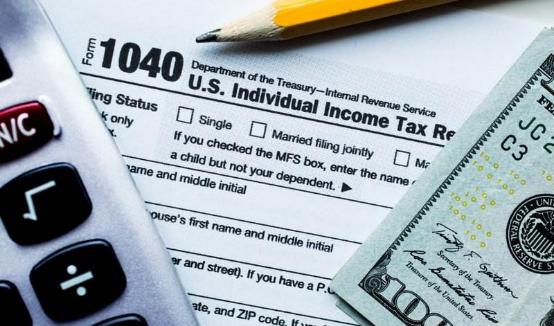
税收是国家发展经济、服务社会、改善民生最为重要的经济来源。
企业要发展,想留下足够的利润扩大生产规模,创造更大收益,合理合法地利用税收优惠政策来避税其实无可厚非。
但是无视自身的社会责任和应当承担的义务,所谓的 ” 避税 ” 其实就是挖空心思地逃税、漏税。
不管美国还是中国,这种所谓的 ” 税务统筹 “,最终都会是搬起石头砸了自己的脚。
从道义上来说,就是为富不仁。
White House: 400 wealthiest families paid average tax rate of 8.2 percent
BY NAOMI JAGODA
9/23/2021

The White House released an analysis on Thursday estimating that the 400 wealthiest American families paid an average federal income tax rate of only 8.2 percent on $1.8 trillion of income from 2010 to 2018.
“Two factors that contribute to this low estimated tax rate include low tax rates on the capital gains and dividends that are taxed, and wealthy families’ ability to permanently avoid paying tax on investment gains that are excluded from taxable income,” the report said.
The analysis, which was authored by economists from the White House Council of Economic Advisers and the Office of Management and Budget, comes as Democrats in Congress are working on a tax-and-spending package that would advance much of President Biden‘s agenda. Biden has proposed a number of tax increases on the wealthy and corporations in order to pay for his spending priorities in areas such as health care and child care, and he is seeking to prevent moderate congressional Democrats from scaling back these proposals.
The White House analysis is based on IRS statistics, the Federal Reserve’s Survey of Consumer Finances, and Forbes magazine estimates about the 400 wealthiest Americans.
The White House noted that its estimate of the tax rate for the wealthiest households is “much lower” than other groups’ estimates of top income tax rates. The administration’s takes into account income from unrealized capital gains, which is not typically included in this type of analysis.
The report highlighted Biden’s proposals to raise the top capital gains rate and end the “stepped-up basis” tax preference that benefits heirs as ways to address the fact that wealthy Americans pay a low tax rate.
Legislation approved by the House Ways and Means Committee earlier this month included a smaller capital gains increase than Biden had proposed and does not repeal stepped-up basis. But Senate Democrats are expected to offer their own ideas for how to pay for the spending package, and Finance Committee Chairman Ron Wyden (D-Ore.) has indicated that he wants to prevent billionaires and their heirs from avoiding taxes on stock gains.
Wyden said in a statement Thursday that “the White House’s new report is shocking but not surprising.”
Top 1 Percent Avoid Paying $163 Billion in Taxes Each Year: Treasury Department
By Leia Idliby
9/08/2021
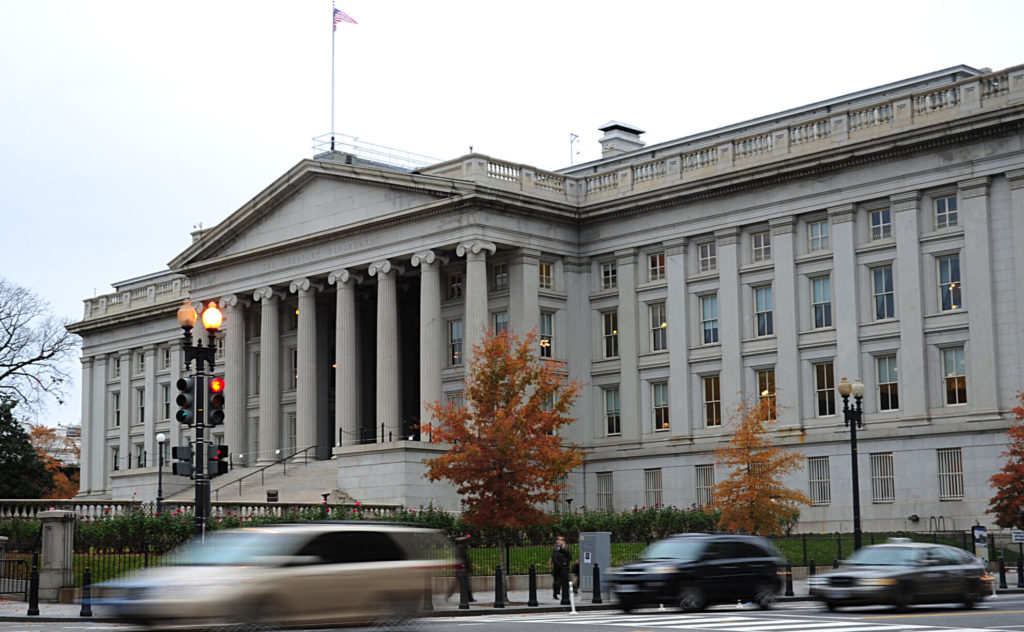
The Department of Treasury has found that the wealthiest one percent of Americans have avoided paying $163 billion in taxes per year.
The Treasury’s analysis, titled “The Case for a Robust Attack on the Tax Gap” and written by Deputy Assistant Secretary for Economic Policy Natasha Sarin, opens by explaining, “A well-functioning tax system requires that everyone pays the taxes they owe.”
The report argues that narrowing the tax gap, which accounts for the difference between owed and collected taxes, will lead to a more equitable economy, as it currently “totals around $600 billion annually,” which would lead to “approximately $7 trillion of lost tax revenue over the next decade.”
Sarin’s report includes a table detailing tax data from 2019, which ultimately found that more than $160 billion lost annually is “from taxes that top 1 percent choose not to pay.”
The report goes on to argue that in order to collect owed taxes and enforce laws against high earners and corporations, the IRS needs funding to update their technology and to hire agents able to decipher “thousands of pages of sophisticated tax filings.”
“It also needs access to information about opaque income streams — like proprietorship and partnership income — that accrue disproportionately to high-earners,” she wrote.
The reports comes as President Joe Biden’s administration is pushing for a significant increase to the IRS budget. The White House has specifically called for $80 billion of investment over the next ten years, claiming it would help the government catch tax evasion schemes.
“Giving the IRS the information and resources that it needs will generate substantial revenue,” Sarin concluded. “But even more importantly, these reforms will create a more equitable, efficient tax system.”
Top 0.1% Tap Private Placement Life Insurance to Avoid Biden’s Taxes
Financial Advisor IQ
9/04/2021
The richest Americans who want to avoid paying higher taxes under President Joe Biden are tapping a niche product that has become more generally available, cheaper and flexible in recent months.
Some advisors who cater to the top 0.1% say that private placement life insurance is “dominating conversations,” according to Bloomberg.
Assets held in PPLI policies are tax-free, and when a policyholder dies, their heirs inherit the policy’s contents tax-free, Bloomberg writes. Assets inside a PPLI can also be brorrowed against or rolled into another insurance product, according to the news service.
PPLI policies, however, have complicated rules to qualify as life insurance to take advantage of the tax benefit, can fail if not properly funded and taking assets out comes with a heavy tax burden, Bloomberg writes.
“Clients are very interested in this right now,” said Tara Thompson Popernik, director of research for Bernstein Private Wealth Management’s wealth planning and analysis group, according to Bloomberg. “It takes some education to get them to wrap their heads around the concept, because it’s not just buying life insurance.”
But it’s not just the threat of Biden going after billionaires and millionaires to pay their “fair share” that’s making the loophole: a late-2020 insurance law change made PPLI “more powerful,” while competition among insurers has pushed down costs while increasing the choice of products, according to Bloomberg.
“Private placement life insurance poses a serious obstacle to President Biden’s goal of guaranteeing that high-income individuals pay tax on large gains at least once per lifetime,” said Daniel Hemel, a law professor at University of Chicago, according to the news service. “PPLI is a massive loophole — entirely legal, easy to exploit, and politically very hard to close.”
How Does Private Placement Life Insurance Work?
By Maxime Croll
9/04/2021
Private placement life insurance (PPLI) is a niche solution designed for wealthy individuals in high tax brackets who have a few million dollars available to commit.
Many times, those for whom PPLI was designed want to invest in hedge funds, but hedge funds can carry significant taxes: If the wealthy individual invests in them in their personal name, in a taxable account or in a trust, every trade the manager makes can generate a capital gains distribution, and any ordinary income is taxable at particularly high rates.
That’s a serious issue at higher income levels, where combined federal and state income and capital gains taxes can easily add up to nearly 50% in some jurisdictions.
One increasingly popular solution: Hold these assets within a life insurance policy.
Who does private placement life insurance make sense for?
PPLI isn’t for everybody. A good candidate for this strategy is someone with annual income in the millions, a net worth of $20 million or more or someone who controls a business that puts them in that category.
Life insurance comes with a number of important tax benefits, which can be major considerations for those in the highest tax brackets. But standard life insurance policies you can get from your neighborhood agent don’t contain the hedge funds, funds of funds and other alternative investments that these investors require for their own diversification and investment needs.
That’s where privately placed life insurance comes in: Wealthy families, family foundations, trusts, corporations and banks work with hedge funds and money management firms to create their own life insurance contracts, designed to reduce their tax burdens.
The idea is to combine the financial advantages of highly taxed hedge funds and similar investments with the tax advantages of life insurance. There are insurance and administrative costs associated with the life insurance contract, but the tax savings in a properly structured life insurance policy, plus the death benefit itself, more than make up for the additional insurance and administrative costs. And the insured can generally access most of the funds anyway, tax-free, via policy withdrawals and loans.
When a wealthy investor in a very high tax bracket wants to invest in hedge funds anyway, it often makes sense to create a privately placed life insurance policy to shelter the individual from taxes.
Qualifications to purchase PPLI
While anyone can buy a variable universal life insurance policy (as PPLIs are structured), PPLIs are an unregistered securities product. As such, agents can only present them to accredited investors.
Under current Securities and Exchange Commission (SEC) regulations, accredited investors are those with a net worth of at least $1 million (excluding primary residence), or income of at least $200,000 in each of the preceding two years. Married couples must demonstrate income of $300,000 in each of the preceding two years.
Ultimately, the owner is typically an individual or a trust. Holding the policy in an irrevocable trust allows the insured to keep the policy out of their taxable estate, possibly reducing eventual estate tax liability, though they give up rights to access the cash value prior to death.
In reality, the typical PPLI candidate or family has:
- A high net worth
- The ability to fund $1 million or more in annual premiums for several years, at least — $3 million to $5 million is typical
- A desire for hedge fund or alternative investment exposure
- Highly tax-inefficient investments
- High state and local income taxes in addition to federal (advisors should be alert to the effect of any state premium taxes on the strategy)
- A desire to shelter assets from creditors
It’s important to be able to make a significant investment over the first several years as this initial investment of premium “primes the pump,” meaning that, assuming the underlying investment subaccounts perform adequately, the insured’s policy can become self-funding. That is, growth in its cash value covers the cost of insurance. At that point, the insured can cease committing premium if they choose.
Where to buy private placement life insurance
Professional wealth managers tend to recommend vendors. However, some of the most prominent providers of PPLI services and insurance-dedicated funds (IDFs) include BlackRock, Wells Fargo Private Banking, John Hancock, Zurich, Crown Global and Pacific Life.
How private placement life insurance works
Privately placed life insurance is generally structured as a variable universal life insurance policy, meaning:
- Premiums are flexible. Policyholders can pay as much or as little premium as they like, whenever they like.
- The cost of insurance is deducted from the cash value in the policy subaccounts each month or each year.
- To keep the policy in force, the owner must pay enough premium to maintain enough cash value to cover the cost of insurance.
- If the cash value reaches zero, the policy will lapse.
The agent who sets it up will usually structure the policy to maximize cash value accumulation while keeping the death benefit (and thus the cost of insurance) relatively low. The policy owner, working with their insurance professional, then pays as much premium into the policy as possible every year.
The client gets the benefit of the tremendous tax advantages of the life insurance contract:
- Tax-free death benefits to heirs
- Tax-deferred growth of cash value
- Tax-free growth of dividends (if applicable)
Meanwhile, the insured still has access to accumulated cash values, which can be used for any purpose and accessed at any age. There are no penalties for accessing the cash value before turning age 59 1/2, as there are with annuities and with individual retirement accounts (IRAs). In addition, there are no required minimum distributions, as there are with annuities, IRAs and retirement accounts.
PPLI investments
As discussed, the best investment candidates for a PPLI policy are those that are tax-inefficient. They generate substantial current taxable income, imputed (phantom) income or capital gains unless they are held in a retirement account or life insurance vehicle that provides tax-free growth.
PPLI owners and their advisors either choose specific investments for their portfolios or carefully select money managers to manage their portfolios within the policies. Possible investments can include venture capital, real estate investment trusts, private equity funds, funds of hedge funds and commodity funds, or any fund with extremely high turnover rates that generate substantial short-term capital gains.
But that doesn’t mean anything goes. PPLIs must still meet IRS standards for investor control, insurance and diversification.
Investor control. Individual policy owners and family offices are prohibited from exercising influence over the specific investment decisions of the fund managers. If the owner exercises too much control, the IRS may disqualify the tax advantages of the policy. Current case law requires managers to operate on an independent, discretionary basis. Assets held in PPLI policies are not designed to be separately managed accounts, and they should not be treated that way.
Insurance standards. The life insurance structure allows owners to sell insurance-dedicated funds within the policy as often as they like and replace them with other qualified investments, without tax consequences. IDFs are financial products that are designed specifically for the PPLI market. Hedge funds and funds of funds often create a version of their flagship offering as an IDF that uses all the same strategies and managers but is also managed to adhere to laws and regulations that govern insurance portfolios.
Diversification requirements. Investments must also meet diversification rules:
- No single investment may make up more than 55% of the insurance subaccount portfolio.
- No two investments may constitute more than 70% of the portfolio.
- No three investments may constitute more than 80% of the portfolio.
- No four investments may constitute more than 90% of the total assets of the account.
Therefore, the portfolio must, in practice, contain a minimum of five distinct investments in order to fully qualify as life insurance. Otherwise, the IRS will disqualify the policy, and the owner will lose the tax advantages of the life insurance structure.
Accessing your money in a PPLI
Policy owners can withdraw from their cash value or borrow against it at any time, for any purpose.
Withdrawals Withdrawals are tax-free up to the basis of the policies. So owners can get back their premiums, minus fees, without tax consequences — as long as their subaccounts’ performance has kept up with the cost of insurance. If the cash value is greater than the owner’s basis in the policy — that is, what they have paid in — then additional withdrawals in excess of basis are taxed as a gain.
Policy loans You can borrow against the cash value of the policy with no underwriting or credit check. The loan is secured by the policy’s cash value. This makes the policy a solid choice for emergency funds. The loan does not have to be paid back, though the policy owner may want to replenish funds borrowed from the policy so as to maximize long-term tax-free growth.
Because the loans are secured by payments already made to the insurer, interest rates are often very low. Borrowers should be aware that interest does accrue, and borrowing will reduce any death benefits paid out unless the loan is paid back to the policy.
Contribution limitations and modified endowment contracts
The government imposes limits to how much premium the owner can contribute to the policy in a given year in order to help ensure life insurance is used for its intended purpose, as opposed to a tax shelter. The result of the contribution limit is the “seven-pay” test. If policyholders contribute so much premium to their policies that the policy would be paid up in less than seven years, it becomes a modified endowment contract (MEC). This will disqualify the policy from many of the tax advantages on withdrawals and loans:
- One of the great things about insurance policies is that when you withdraw cash value from an in-force life insurance policy, you get the benefit of first-in, first-out (FIFO) taxation. This allows you to withdraw as much as you’d like, up to your basis in the policy (the amount you have contributed), tax-free. If your policy becomes an MEC, this advantage disappears. Instead, the IRS will deem you to be withdrawing interest first, not your basis. This interest is taxable.
- Likewise, while the law allows you to take tax-free loans from a life insurance policy, once your policy becomes an MEC, those loans become taxable as income.
- Additionally, once your policy becomes an MEC, any withdrawals prior to age 59 1/2 become subject to a 10% early withdrawal penalty, just as with a qualified annuity or a 401(k).
Your policy documents should specify the annual MEC limit.
| Life insurance contract | MEC | |
|---|---|---|
| Premiums | Limited by seven-pay test | Not limited except by contract |
| Loans | Tax-free for life of policy | Taxable as income |
| Withdrawals | Tax-free up to basis (FIFO) | Taxable until all interest/gains are withdrawn |
| Death benefit | Tax-free | Tax-free |
| Death benefit amount | Usually kept small in PPLI to maximize growth of cash value | Used to maximize death benefit |
How are PPLI policies different from retail life insurance?
Structurally, privately placed life insurance is identical to a conventional variable universal life insurance policy. What sets the PPLI apart is the assets held in the subaccount: An everyday retail customer will choose from a limited menu of subaccount investments offered by the life insurance company.
But when you buy a PPLI, you can customize your investment subaccounts. You can include nearly any investment imaginable — from index funds to hedge funds. Your registered investment advisor or wealth manager can help design the investments in your menu of subaccounts.
Tax and other benefits of PPLI
High-income individuals are very tax-sensitive. The ordinary income tax rate on incomes above $518,401 in 2018 was 37%, plus additional Affordable Care Act taxes on high-income individuals. When you add in state and local income taxes in some jurisdictions, the income tax bite for high-income families could add up to nearly 50%.
The heart of the PPLI strategy lies in the tax advantage. The PPLI essentially converts a very tax-inefficient investment, such as a hedge fund, into a very tax-efficient one for the high-net-worth investor.
| Hedge fund held in personal account (typically) | Hedge fund held within a PPLI | |
|---|---|---|
| Death benefit | N/A | Tax-free death benefit |
| Income | Taxable at 37%-50% | Tax-free for life of policy |
| Short-term capital gains | Taxable at 37%-50% | Tax-free for life of policy |
| Long-term capital gains | Taxable at 20% | Tax-free for life of policy |
| Imputed income | Taxable at 37%-50% | Tax-free for life of policy |
| Transfers to other life policies | Taxable, gain over basis | Tax-free under IRC Section 1035 |
| Transfer to annuities | Taxable, gain over basis | Tax-free under IRC Section 1035 |
| Creditor protection | None | Enhanced |
| Estate tax treatment | Taxable unless in irrevocable trust | Taxable in estate of owner unless in irrevocable life insurance trust |
| Tax loss harvesting strategies | Investors can sell losers to offset capital gains | N/A, though losing policies can be surrendered |
| Treatment at death | Subject to probate | Bypasses probate — death benefit goes to beneficiaries in a matter of days |
This strategy neutralizes the impact of current income by placing the assets within a life insurance policy, with tax advantages similar to a Roth IRA. Assets within the policy enjoy tax-free growth for as long as they remain in the policy.
In addition to the tax benefits that generally accrue to life insurance cash values, PPLI policies often provide a number of additional benefits:
- Lower commissions. The cost of insurance and commissions is low compared to most retail life insurance products: Issuers are more interested in managing your money than in generating large upfront commissions.
- No surrender charges. Because they don’t rely on a commission-paid insurance sales force as traditional insurance companies do, they don’t need to recoup commission costs by imposing surrender charges.
- Phantom income is not taxed. Some investments generate a tax liability to the owner, even though there is no actual cash income distributed. For example, a zero-coupon bond pays no income until it matures, but the IRS forces taxpayers to pay taxes on imputed income as the bond approaches maturity. If the asset is held in a PPLI, the tax on imputed or phantom income is neutralized.
- Tax compliance is easier. Tax reporting is a constant headache for hedge fund investors and those who hold interests in limited partnerships and master limited partnerships. By holding these assets within a PPLI, the taxpayer can eliminate having to deal with K-1 reports and other reporting requirements.
- Creditor protection. Cash value life insurance is a proven way to shelter assets from creditors. Life insurance and annuities enjoy substantial asset protection in every state, and in some states, like Florida and Texas, creditor protection is unlimited. In some cases, PPLI life insurance assets are held offshore — placing these assets out of the reach of U.S. courts. No U.S. court can force a foreign company to release funds to a creditor.
新媒体广告策划
往微信群丢名片、砸海报、甩二维码
瞬间被踢飞,或者没人理?
资讯软文营销
你的文案专家
无论你是房地产经销、贷款专员,
还是保险经纪,或从事其他行业
我们将为你——
根据投放渠道、匹配群主题
打包定制资讯类带广告文案
配套地区、行业渠道投放
千群代发,精准推广
为你的事业助推
可扫码加小编微信:↓


